Templo Bunhwangsa (분황사)
2.1Km 2021-01-21
Bunhwang-ro 94-11, Gyeongju-si, Gyeongsangbuk-do.
+82-54-742-9922
El templo Bunhwangsa fue construido durante en el año 634, durante el tercer año de reinado de la Reina Seondeok, 27ª monarca de la Dinastía Silla. Los prominentes monjes budistas Wonhyo y Jajang residieron en este templo.
Al tener una larga historia, este templo albergaba muchas reliquias históricas, pero la mayoría se han perdido debido a las invasiones mongolas y japonesas. Se conservan la Torre de Piedra Mojeon, Hwajaengguksabibu (piedra memorial de Wonhyo, renombrado monje budista de la dinastía Silla), Samnyongbyeoneojeong (manantial en el que según una leyenda residían los tres dragones que protegían el Reino de Silla), y los pilares Danggan.
La Torre de Piedra Mojeon, registrada como Tesoro Nacional N° 30, alcanza una altura de 9,3 metros, y fue construida usando bloques de andesita. Aunque se piensa que la torre tenía 7 o 9 niveles, hoy en día se conservan tan solo 3. Los pilares Danggan, dos pilares de piedra de 3,6 metros de altura, están situados en la entrada del templo. Danggan se refiere a los mástiles hechos de madera, metal o piedra, que se usaban para colgar las banderas que indicaban los festivales budistas para que se enterasen incluso las personas que vivían lejos. Los pilares están soportados por tortugas de piedra, una característica poco común. También hay estatuas de Buda que se exponen en el Museo Nacional de Gyeongju y que fueron encontradas en un pozo situado 30 metros al norte del muro posterior del templo Bunhwangsa.
Bosque Gyerim de Gyeongju (경주 계림)
2.3Km 2025-08-11
Gyo-dong, Gyeongju-si, Gyeongsangbuk-do.
El bosque Gyerim se encuentra entre el observatorio Cheomseongdae y la fortaleza Wolseong de la ciudad de Gyeongju. El bosque está densamente poblado por antiguas zelkovas y sauces arraigados en suaves colinas y a lo largo del pequeño arroyo en la parte noroeste del bosque. Según la leyenda, el bosque está estrechamente relacionado con los mitos que rodean el nacimiento de Alji, el fundador del clan Kim de Gyeongju. Como tal, fue designado Sitio Histórico Nacional.
La leyenda cuenta que el rey Talhae escuchó a un gallo cantando desde lo más profundo del bosque Sirim. El canciller Hogong fue enviado a investigar. Al llegar, se encontró con un gallo debajo de un árbol en el que colgaba una caja de oro. Hogong de inmediato reportó su hallazgo al rey, quien le dio instrucciones para traer la caja de oro al palacio. El rey abrió la caja y encontró a un niño pequeño, Kim Alji. El bosque, que había sido llamado 'Sirim' o 'Gurim' fue sustituido por 'Gyerim' ('gye' significa gallo'). El nombre Gyerim también fue usado para referirse al reino de Silla.
Alji fue adoptado como hijo del rey, pero como la corona fue legada al rey Pasa de la familia Park, nunca ascendió al trono. El clan Kim volvió al linaje real con la coronación del rey Naemul unos años más tarde.
El monumento de piedra que registra el nacimiento de Kim Alji fue erigido en el tercer año del rey Sunjo en la dinastía Joseon. Situado cerca de la fortaleza real de Silla, el bosque está aún profundamente reverenciado como lugar del místico nacimiento del primer antepasado de la familia real del clan Kim de Silla. Encontramos flores amarillas de colza a lo largo del camino que conecta Daereungwon con Gyerim y Banwolseong, contribuyendo al ambiente mágico del bosque.
Puente Woljeonggyo (월정교)
2.3Km 2025-03-17
Gyo-dong 274, Gyeongju-si, Gyeongsangbuk-do
Escuela Confuciana Gyeongju Hyanggyo (경주향교)
2.4Km 2025-05-26
Gyochon-angil 27-20, Gyeongju-si, Gyeongsangbuk-do
Yosukgung 1779 (요석궁1779)
2.4Km 2025-09-02
19-4 Gyochonan-gil, Gyeongju-si, Gyeongsangbuk-do
Tumba Real del Rey Naemul de Gyeongju (경주 내물왕릉)
2.5Km 2022-09-19
Gyo-dong, Gyeongju-si, Gyeongsangbuk-do
El rey Naemul fue el 17º monarca del reino de Silla (en el poder de 356 a 402) y se convirtió en el segundo rey de la familia Kim. El rey Naemul fue conocido como el primero en iniciar el título de rey de “Maripgan” y fue conocido por difundir los avances culturales de China al pueblo coreano. Cuando atacaron las fuerzas aliadas de Baekje y Japón, pidió ayuda a Gwanggaeto el Grande de Goguryeo y llevo a la gente a la victoria, contribuyendo al aumento de la fuerza del Reino de Silla. Después de su gobierno, el trono fue cedido exclusivamente a miembros de la familia Kim.
La tumba del rey Naemul es un montículo grande (22 m de diámetro y 5,3 m de altura) y se encuentra en la colina norte de la Escuela Neoconfuciana de Gyeongju. Un borde de piedras naturales se expone alrededor de la parte inferior del montículo, lo que apunta al hecho de que la tumba de la cámara interior estaba hecha de piedra. En el documento histórico Samguk Sagi (Historia de los Tres Reinos), no se encuentran registros sobre la tumba, pero el Samguk Yusa (Memorabilia de los Tres Reinos) describe la tumba del rey está en el suroeste de Cheomseongdae, que coincide con la ubicación de la tumba.
Observatorio Cheomseongdae de Gyeongju (경주 첨성대)
2.5Km 2025-04-24
Cheomseong-ro 140-25, Gyeongju-si, Gyeongsangbuk-do.
Cheomseongdae es el observatorio astronómico más antiguo que existe en Asia. Construido durante el reinado de la reina Seondeok (632-647), fue utilizado para observar las estrellas y pronosticar el tiempo. Esta construcción de piedra es una hermosa combinación de líneas rectas y curvas, y fue designada como Tesoro Nacional el 20 de diciembre de 1962. Cheomseongdae fue construido con forma cilíndrica, con piedras de 30 cm de diámetro. Fueron apiladas 362 piedras para hacer 27 niveles. Aproximadamente a 4,16 m de altura desde el pie hay una entrada cuadrada de 1 ㎡ y un lugar para colocar una escalera de mano bajo ella. El interior está repleto con tierra hasta el nivel 12, y los niveles 19, 20, 25 y 26 tienen todos largas rocas aferradas en dos áreas, para formar la letra china “井” (jeong). Mide 9,17 m de altura y la piedra de la base de cada lado mide 5,35 m. El equinoccio primaveral y otoñal, los solsticios de invierno y de verano y los 24 períodos solares (también conocidos como el año solar astronómico) eran determinados por la observación de las estrellas. La letra “jeong” de piedra de la cima del observatorio, se cree que se ha utilizado como estándar para decidir las direcciones: norte, sur, este y oeste. Las 362 piedras utilizadas para construir Cheomseongdae representaban los 362 días del año lunar.
Aldea Gyochon en Gyeongju (경주 교촌마을)
2.6Km 2025-04-24
Gyochon-gil 39-2, Gyeongju-si, Gyeongsangbuk-do.
Situada en la ciudad de Gyeongju, la Aldea Gyeochon es un pueblo de casas tradicionales hanok que permite a los visitantes ver la vida del famoso clan Choi. Los visitantes pueden ver su casa y probar el licor Beopgju Gyodong de Gyeongju.
Gyeongjuhanok 1st (경주한옥1번가)
2.6Km 2025-07-24
20, Cheonwon 1-gil, Gyeongju-si, Gyeongsangbuk-do
Standing at the entrance of Cheonwon Village in Gyeongju, Gyeongsangbuk-do, Gyeongju Hanok First is a hanok stay combining the beauty of tradition with modern convenience. All rooms are Korean-style with comfortable bedding on the floor, and all have a toilet and bathroom. One guestroom has its own kitchen, while the others have basic cooking facilities in a shared kitchen. The spacious yard is decorated with figurines in traditional clothes. Nearby tourist attractions include Anapji Pond, Cheomseongdae Observatory, and Gyeongju Museum.
Festival de la Calle del Muro de Piedra del Parque Daereungwon en Gyeongju (경주 대릉원돌담길 축제)
2.8Km 2025-03-14
Hwangnam-dong, Gyeongju-si, Gyeongsangbuk-do
054-776-5267
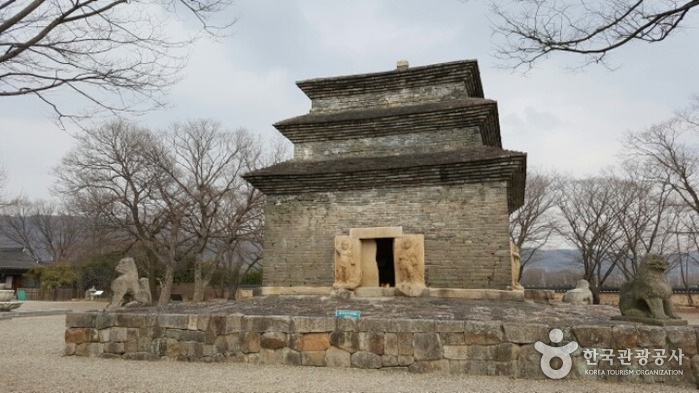

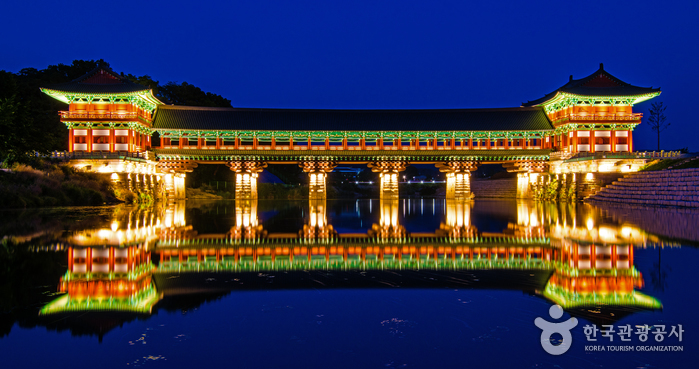
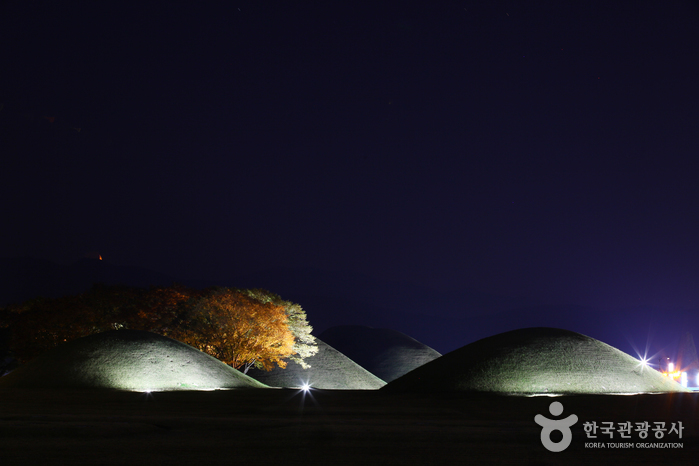
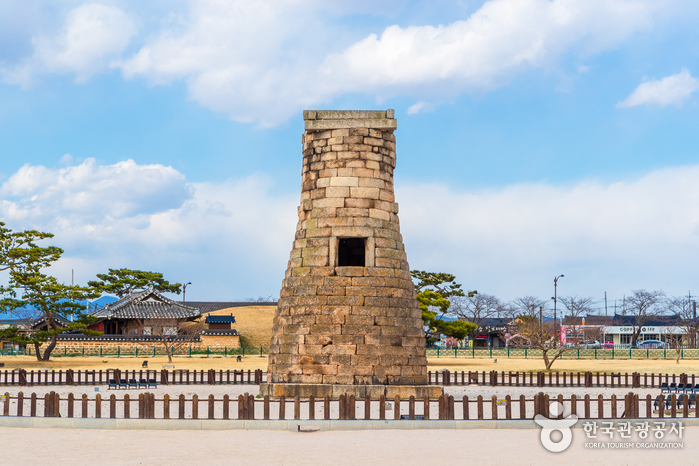
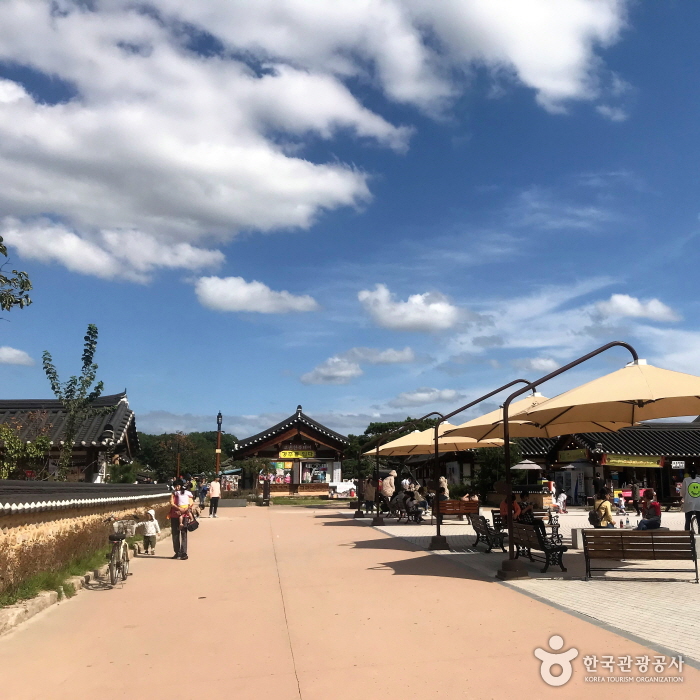
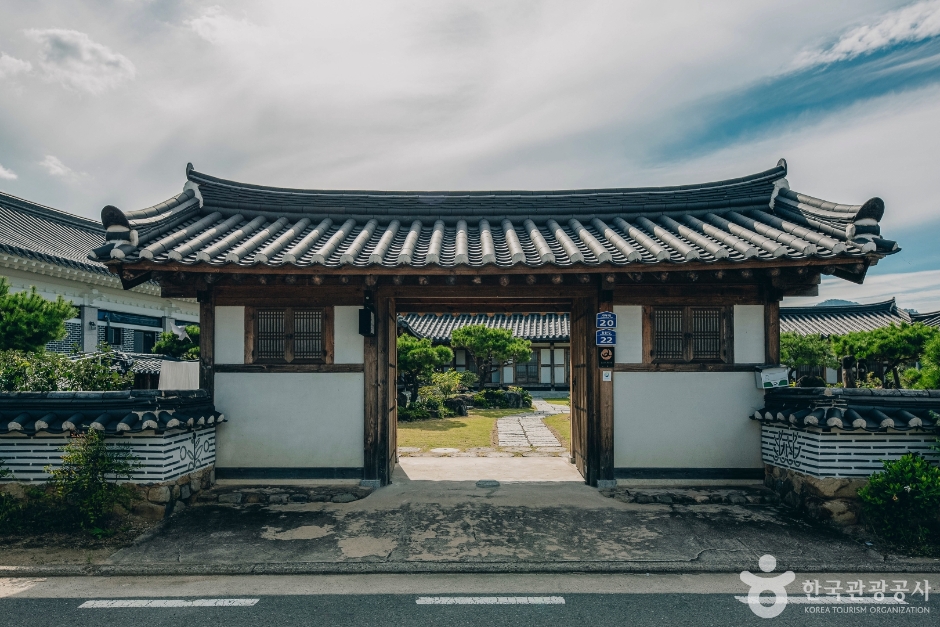
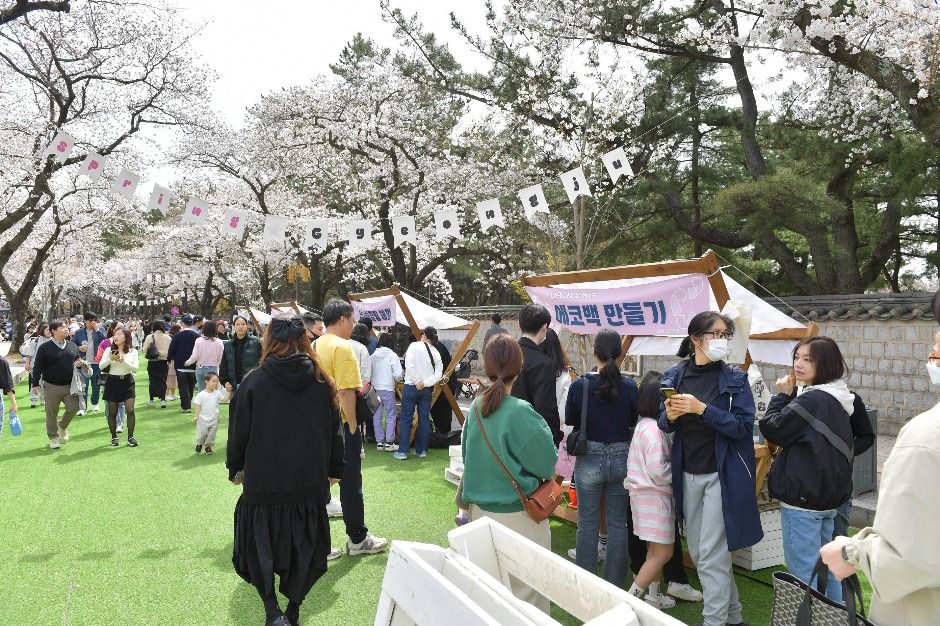
 Español
Español
 한국어
한국어 English
English 日本語
日本語 中文(简体)
中文(简体) Deutsch
Deutsch Français
Français Русский
Русский